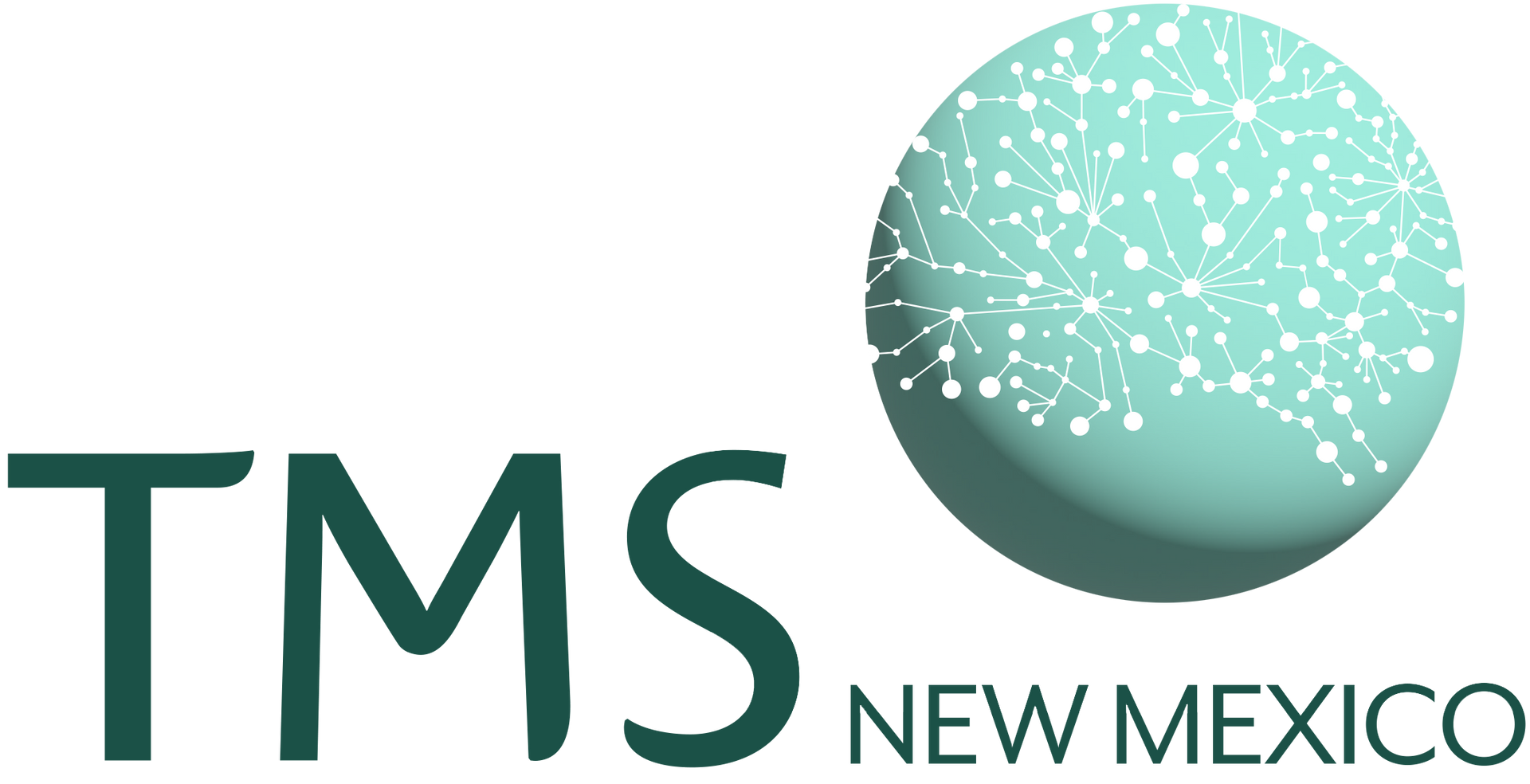300 Paseo De Peralta Suite 208, Santa Fe, NM 87501
TMS vs. Antidepressants: Choosing the Right Path for your Mental Health in New Mexico
Transcranial Magnetic Stimulation (TMS) is emerging as a safe and effective alternative to antidepressant medications. In this article, we’ll examine how TMS compares to antidepressants in terms of effectiveness, safety, and cost. Understanding these options can help you make an informed decision about your mental health journey.
TMS vs. Antidepressants: Choosing the Right Path for Your Mental Health in New Mexico
What Is TMS?
Transcranial Magnetic Stimulation (TMS) is a non-invasive procedure that uses magnetic pulses to stimulate areas of the brain. The treatment has been approved by the US Food & Drug Administration (FDA) to treat major depressive disorder (MDD) and other conditions, including obsessive-compulsive disorder (OCD), migraines, and smoking cessation. TMS New Mexico specializes in this advanced therapy, offering a solution for those who haven’t found relief with traditional antidepressants.
During a TMS session, a device delivers targeted magnetic pulses to stimulate areas of the brain linked to mood regulation and cognitive control. Sessions are painless, require no anesthesia, and are conducted in an outpatient setting. Most patients undergo 20–30 sessions over four to six weeks, with noticeable improvements often starting within the first two weeks.
What Are Antidepressants?
Antidepressants are often used to treat depression.
While antidepressants have been a cornerstone of depression treatment since the 1980's, they may not work for everyone, and they aren't necessarily a good long-term option. They can cause significant side effects, leading some patients to seek alternatives like TMS. TMS can be a great oppurtunity to step down on some of your medication.
How TMS Works vs. Antidepressants
TMS Mechanism
TMS uses magnetic pulses to stimulate electrical currents in nerve cells and the release of key neurotransmitters such as serotonin, dopamine, and glutamate. This process can activate underactive brain regions associated with depression, such as the dorsolateral prefrontal cortex. TMS has also been shown to improve neuroplasticity, the brain’s capacity to reorganize itself. This mechanism can help reset dysfunctional nerve circuits associated with depression and other mental health disorders.
Antidepressants Mechanism
SSRIs work by blocking the reabsorption of serotonin into neurons, increasing its availability for mood regulation. SNRIs also target norepinephrine, which impacts energy and focus.
Effectiveness: TMS vs. Antidepressants
TMS Effectiveness
Research indicates that between 50% to 60% of people with treatment-resistant depression (TRD)–who have failed to respond to traditional treatments–have a clinically significant improvement in symptoms following TMS. Around one-third of TRD patients experience complete remission, meaning their symptoms go away entirely.
Antidepressants Effectiveness
While antidepressants are effective for many, approximately 10–30% of people with depression see little to no improvement despite trying multiple medications. For these people, TMS could be the effective solution needed.
Safety: TMS vs. Antidepressants
TMS Safety
TMS is generally well-tolerated. Minor side effects include:
- Headache: Mild to moderate headaches are common but usually improve over time.
- Scalp discomfort: Tingling, sensitivity, or mild pain at the treatment site during or after a session.
- Facial muscle twitching: Involuntary contractions of facial muscles during stimulation.
- Lightheadedness: A brief feeling of dizziness or lightheadedness after a session.
- Discomfort from noise: The clicking sound of the TMS machine can be loud, which may cause discomfort. Ear protection is typically provided.
- Fatigue: Some people report feeling tired after sessions, especially early in the treatment course.
- Mood changes: Temporary changes in mood, such as irritability or increased anxiety, can occur but are generally mild.
These effects generally disappear once the treatment is over. More serious long-term risks include hearing loss and theonset of mania. However, cases are extremely rare. Similarly, TMS-induced seizures have been reported, but these are also very unlikely, occurring in less than one percent of cases.
At TMS New Mexico, we ensure rigorous safety protocols to minimize the chance of adverse effects and ensure your wellbeing.
Antidepressants Safety
Antidepressants can cause a wide range of physical and psychological side effects. These include:
- Gastrointestinal issues: Nausea, diarrhea, or constipation.
- Weight changes: Weight gain or, less commonly, weight loss.
- Sleep disturbances: Insomnia, excessive sleepiness, or vivid dreams.
- Sexual dysfunction: Reduced libido, difficulty achieving orgasm, or erectile dysfunction.
- Dry mouth: A common sensation of mouth dryness.
- Dizziness: Feeling lightheaded or faint.
- Fatigue: Low energy or feeling drowsy.
- Anxiety or agitation: A temporary increase in anxiety, especially at the beginning of treatment.
- Headaches: Mild to moderate headaches.
- Sweating: Excessive perspiration, especially at night.
When stopping antidepressants, particularly abruptly, some people experience withdrawal symptoms. These can include dizziness, flu-like sensations, irritability, insomnia, and mood swings.
Costs: TMS vs. Antidepressants
TMS Costs
At TMS New Mexico, we understand the financial concerns surrounding TMS therapy. Individual sessions can range from $200 to $400, which can add to costly amounts for a full course of treatment. However, since TMS is an FDA-approved treatment for depression, most insurance plans cover TMS.
Our team is here to assist with insurance navigation to minimize out-of-pocket costs. We also offer CareCredit, a health and wellness credit card with flexible financing options so you can pay over time for care you want or need.
Antidepressants Costs
Generic antidepressants are relatively affordable, but brand-name medications can exceed $200 monthly without insurance. While insurance coverage often lowers these expenses, ongoing costs can accumulate over time, TMS is over after 4-6 weeks and remission can last for years (whereas medication costs are ongoing.)
Is TMS Right for You?
Choosing between TMS and antidepressants depends on your unique circumstances. TMS may be the better option if:
- You’ve tried multiple medications without significant improvement.
- You experience severe side effects from antidepressants.
- You prefer a non-invasive, drug-free treatment.
- You have no history of seizures or brain damage.
Antidepressants may be appropriate for those with mild to moderate depression or those exploring treatment for the first time. For some, a combination of TMS and medication offers the best results.
If you want to learn more about whether TMS is right for you, request a consultation at TMS New Mexico, and we can tell you everything you need to know about the treatment based on your medical needs.

HELPFUL LINKS TO LEARN MORE
Book an appointment at our mental health clinic in Santa Fe, New Mexico. You are not alone!
READY TO GET STARTED?
At TMS New Mexico of Santa Fe, we specialize in advanced neurocare and psychiatric services aimed at improving mental health for residents of Santa Fe County and Los Alamos County. Our tailored treatment plans are designed to specifically target depression, empowering our clients to lead more fulfilling lives. If you or a loved one struggles with depression, anxiety, OCD, PTSD, or another mental health issue, we may be able to help.
SERVICE AREAS
- SANTA FE
- CAÑONCITO
- SETON VILLAGE
- GALISTEO
- GLORIETTA
- LA CLENEGA
- LOS CERRILLOS
- MADRID
- TESUQUE
- CHUPADERO
- POJOAQUE
- LOS ALMOS
- WHITE ROCK
- NAMBE
- PECOS
- SANTA FE
- CAÑONCITO
- SETON VILLAGE
- GALISTEO
- GLORIETTA
- LA CLENEGA
- LOS CERRILLOS
- MADRID
- TESUQUE
- CHUPADERO
- POJOAQUE
- LOS ALAMOS
- WHITE ROCK
- NAMBE
- PECOS
- TAOS
MAIN LINKS
CONTACT
300 Paseo De Peralta Suite 208, Santa Fe, NM 87501
- Mon - Fri
- -
- Sat - Sun
- Closed
COMPANY
NPI# 1811753767

All Rights Reserved | TMS New Mexico



